Projects
Group of Micrometeorology - IAG/USP
Atmospheric Boundary Layer wind tunnel
One of the great limitations found in developing of environmental contamination studies in regions with complex topography is associated with the practical impossibility of performing observational campaigns in more than one site that, besides meteorological parameters, includes also measurements of pollutant concentration associated to a source with known intensity.
This problem is critical in regions with complex topography and soil occupation heterogeneous as in the case of Iperó (Figure 1) and metropolitan region of São Paulo (Figure 2).
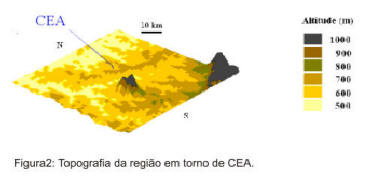
The wind tunnel allows carrying out studies of the effect of the topography on the transport of pollutants in the CLP through the visualization of the trajectory of materials launched in the flow ("tracer") and of accurate measurements of the flow velocity in several points simultaneously.
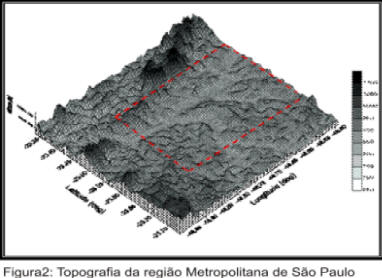
From 1998 the Group of Micrometeorology initiated its participation in the project of construction of a wind tunnel for atmospheric boundary layer, financed by a FAPESP* program for multi-user equipment and coordinated by the Institute of Technological Research of the State of São Paulo (Proc. FAPESP No 98/15402.-5).
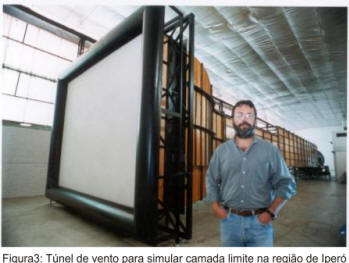
This wind tunnel (Figure 3), in operation since 2002, has being used to perform analogical simulations of the trajectories of atmospheric pollutants in the regions of complex topography of Iperó and of São Paulo City.
The atmospheric boundary layer tunnel (Figure 4) has 36 meters of length, with 2 meters of height, and test area of 3 meters of diameter. The wind velocity measurements are made with anemometer of hot wire and Pitot pipe, using a system of positioning (robot) with precision of 1 mm in each coordinate.
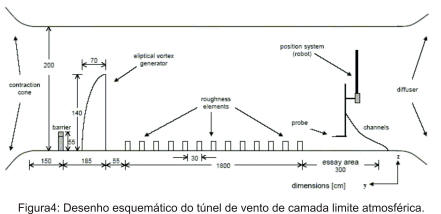
An example of vertical profiles observed in two simulations in the wind tunnel using flow maximum speed of 18 ms-1, obtained for 300 and 400 rpm (fan rotation) is given in Figure 5.
It is observed that the average profiles obey the law of the wall and are associated to a single aerodynamic roughness length equal to 0.02 mm, with relative error of 20%.
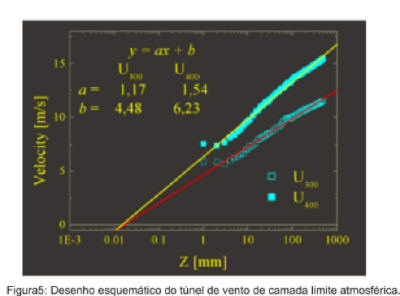
Most relevant publications
Marques Filho, E.P., 2004: Investigação da CLP convectiva com modelo LES aplicado a dispersão de poluentes. Tese de Doutorado. Departamento de Ciências Atmosféricas. Instituto de Astronomia, Geofísica e Ciências Atmosféricas. Universidade de São Paulo. São Paulo. SP. Brasil. 128 pp.
Marques Filho E.P. and Oliveira A.P., 2003: Large Eddy Simulation of na Instantaneous Line Source in Highly Convective Boundary Layer. Proceedings of 4th International conference on Urban Air Quality, March, 24-28, Prague, Czech Republic, 2003.
Karam H., Oliveira A.P. and Soares J, 2003: Application of Mass Conservation Method to Investigate the Wind Patterns over an Area of Complex Topography. Revista Brasileira de Ciências Mecânicas, 25(2), 115 - 121.
Marques E.P., Oliveira A.P., Karam H.A. e Rizza U., 2003: Simulação Numérica do Transporte de um Poluente Inerte e Passivo na CLP Convectiva através de um modelo LES. Revista Ciência e Natura, 1, 83-96.
Oliveira A.P., Bornstein R. and Soares J., 2003: Annual and diurnal wind patterns in the city of São Paulo. Water, Air and Soil Pollution: FOCUS, 3, 03 - 15.
Oliveira A.P., Bornstein R. and Soares J., 2001: Annual and diurnal wind patterns in the City of São Paulo. Proceedings of the second international symposium on air quality management at urban, regional and global scales, 24-28 September 2001, Estanbul, Turkey, 7-14.